2022
Launch Services Value by Market, 2018-2022
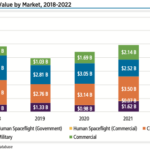
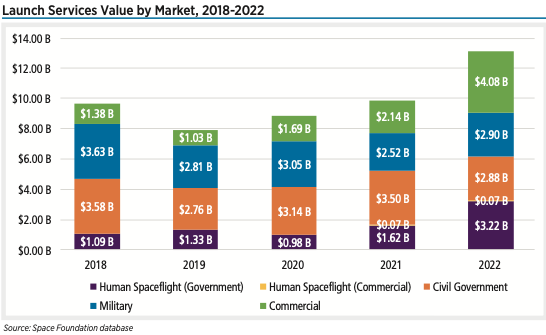
There were 186 launch attempts in 2022, up 28% from 145 attempts in 2021. Of these launches, 179 were successful. Commercial launches, defined as launches carried out for a non-government customer, accounted for 81 of the attempts and 79 of the successes in 2022. This is a significant increase from the 55 commercial launch attempts in 2021.1 The total market value of launches in 2022 was $13.2 billion, based on analysis by Eurospace, the trade association of the European Space Industry.
Global Space Activity by Category, 2007-2027
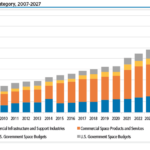
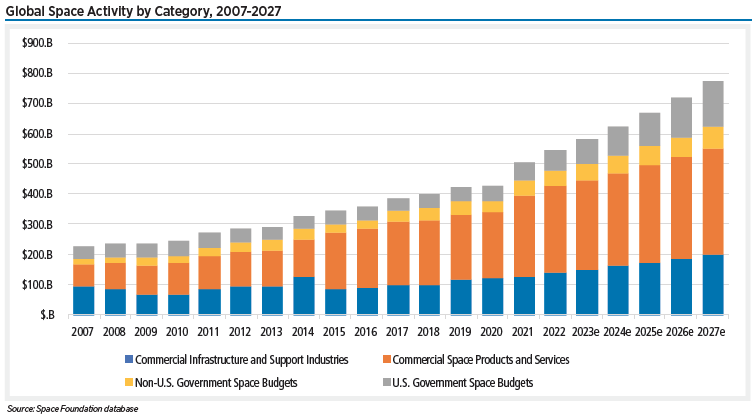
Based on global economic factors, Space Foundation forecasts that growth will slow slightly in 2023 to 6% before picking up for an average five-year growth of 7%. Under these conditions, the space economy would total $772 billion in 2027. This forecast incorporates existing markets in the space economy and does not predict any future disruptive technologies that could have extraordinary growth over the coming years.
Governments that Increased vs. Decreased Space Spending, 2018-2023
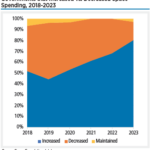
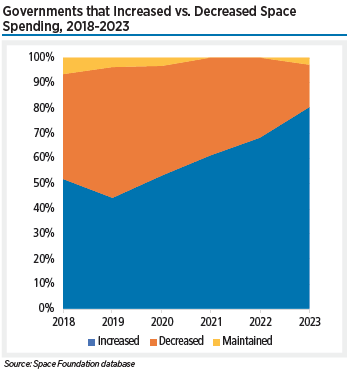
Governments are continuing to grow their space programs at a rapid pace in 2023, preliminary data for 36 nations show. The proportion of nations that increased spending in 2023 reached 81% compared to 68% last year and 52% five years ago.
Militaries Increase Spending on Space as War Hits Europe, Tensions Rise in Asia
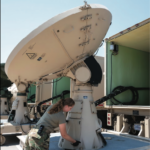
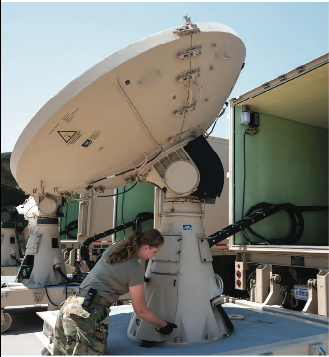
As 2021 ended, Russia launched a ground-based anti-satellite missile, spreading debris in space and foreshadowing a difficult year ahead, which would see global defense spending reach unprecedented levels while Europe grappled with the most serious conflict seen there since the guns went silent in 1945.
Snapshot: The Global Space Economy, 2022
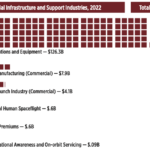
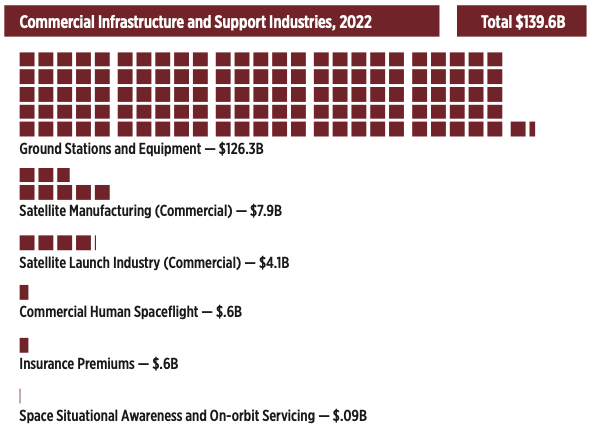
A snapshot look at 2022 global space economy including commercial infrastructure and support industries, space products and services, U.S. Government space budgets and global government space budgets
Maturing Sectors, Widening Space Applications Spur Commercial Revenues to $427B in 2022
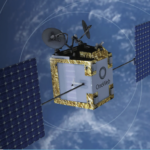
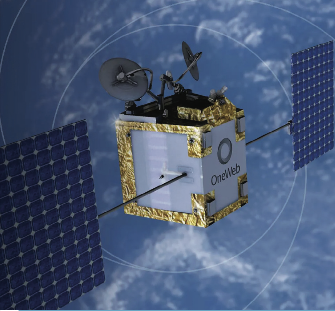
Global commercial space revenue continues to grow, reaching $427.6 billion in 2022, up 7.9% from a revised $396.2 billion in 2021. Commercial space activity includes efforts undertaken by private industry with little or no government investment, as well as products and services sold to private customers. About two-thirds of commercial space revenue in 2022, $288 billion, came from space products and services. The remaining third, $139.6 billion, was generated by space infrastructure and support industries.
Global Space Economy Hits $546B Despite 2022’s Economic Turmoil
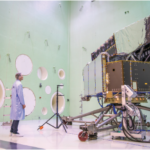
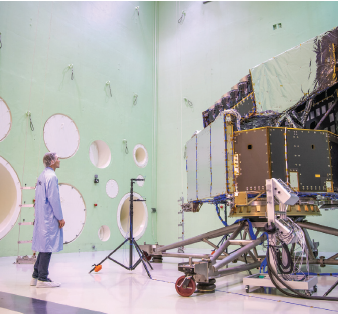
Last year was a tumultuous time for the global economy. High inflation, fluctuating exchange rates, and constricting markets caused trouble across most industries, and space was no exception. The global space economy totaled $546 billion in 2022, 8% higher than the previous year, according to Space Foundation analysis. Government and commercial spending cooled year-over-year, but 2022 still exceeded the five-year growth average.
Government Space Spending Growth Slows to 8% in 2022
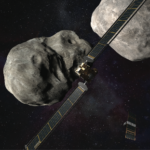
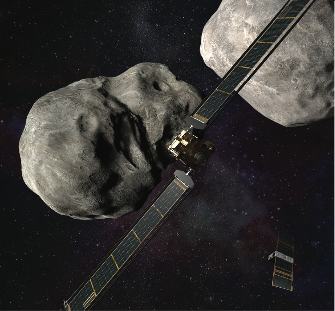
Government space spending in 2022 totaled nearly $119 billion, 8% higher than a revised total of $110 billion in 2021. Annual growth slowed significantly from the previous year, although 2021’s decade-high growth was primarily due to many nations rebounding from spending cuts in 2020 caused by the COVID-19 pandemic. Initial indications from enacted budget for 2023.
Euclid joins James Webb Space Telescope to probe the universe’s earliest unknowns
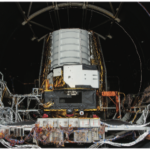
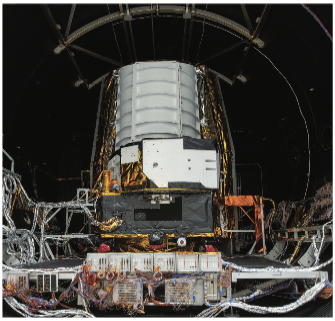
Well before the Euclid telescope was on its way to join the James Webb Space Telescope nearly a million miles from Earth, engineers and scientists were deep into planning how the advancements and knowledge gained from Euclid and Webb will aid in building even more advanced telescopes to probe the next unknowns in the universe. The work is redefining science and delivering new technology for wider use on Earth.
U.S. Space Employment Continues Slow, Steady Climb Since 2016
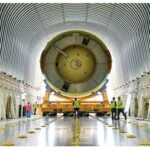
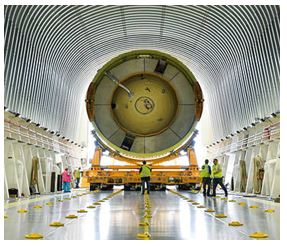
In 2022, more than 201,009 individuals worked in key sectors of the U.S. space economy, an increase of approximately 1% from 2021. Understanding trends in private sector and government space employment can provide insight into the health and future direction of the U.S. space industry.